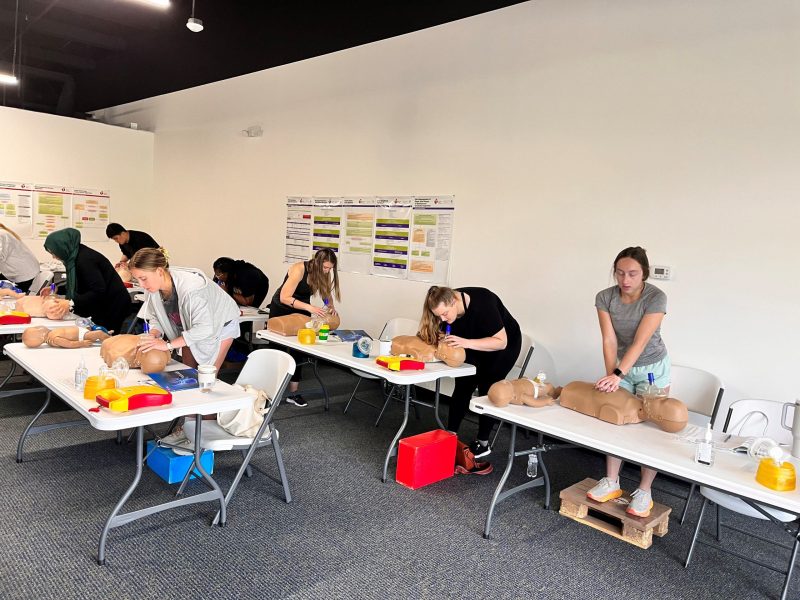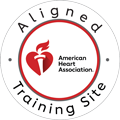When seconds count, knowing how to react during an injury or environmental emergency can make the difference between life and death. Far too often, individuals find themselves frozen by panic or unsure of the correct actions to take, leading to outcomes that could have been improved with proper training and preparedness. Emergencies, whether they involve a sudden injury or a large-scale environmental event, demand a systematic approach and quick, informed decision-making. The importance of understanding proper emergency response procedures extends beyond mere good Samaritanism; it is a fundamental aspect of community safety and individual well-being. This article will delve into the essential steps for responding to both injuries and environmental emergencies, highlight common mistakes to avoid, and underscore the invaluable role of first aid training and emergency preparedness in safeguarding lives. By equipping ourselves with knowledge and practical skills, we can transform from bystanders into effective first responders, ready to act when the unexpected occurs.

Universal Emergency Response Steps
The Primary Assessment Protocol
The bedrock of any effective emergency response lies in a set of universal steps that apply regardless of the specific nature of the crisis. These foundational principles ensure that safety is prioritized, help is activated swiftly, and initial care is rendered appropriately. The primary assessment protocol, often remembered by the acronym SCAB, provides a clear framework for immediate action. The first critical step is “Safety first,” which involves a thorough scene assessment to ensure that the area is safe for both the responder and the injured person. Rushing into an unsafe environment can turn one victim into two. Once the scene is deemed safe, the next step is to “Check for responsiveness” by gently tapping and speaking to the individual to determine their level of consciousness. If there is no response or if the situation is serious, it’s imperative to “Activate emergency services” by calling 911 or the local emergency number without delay. The information provided to the dispatcher should be clear, concise, and accurate, detailing the nature of the emergency and the location. Finally, a rapid “Breathing and circulation check” is performed to assess for vital signs, as these indicate immediate life threats.
The Emergency Action Steps
Beyond the initial assessment, a broader set of emergency action steps guides the overall response. These include the crucial stages of recognizing the emergency, responding appropriately, requesting help, rendering aid, and reporting to emergency personnel. The ability to recognize an emergency quickly involves being aware of your surroundings and identifying signs of distress or danger. Once an emergency is recognized, responding appropriately means maintaining composure and initiating the primary assessment. Requesting help, specifically calling 911, is a non-negotiable step that ensures professional medical or emergency assistance is en route. While waiting for professional help, individuals should render aid within their training level, providing basic first aid or life support as needed. This could range from applying pressure to a bleeding wound to performing CPR. The final step, reporting to emergency personnel upon their arrival, is vital for a smooth handover of care, providing them with critical information about the incident and the care already given.
When to Move vs. When to Stabilize
A critical decision in any emergency is knowing when to move an injured person versus when to stabilize them. Generally, moving an injured person unnecessarily can cause further harm, especially if there is a suspected spinal injury. In such cases, the priority is to stabilize the individual in place and await professional medical assistance, ensuring their head, neck, and back are supported. However, there are immediate danger scenarios where moving an individual is necessary, such as if they are in the path of oncoming traffic, in a burning building, or at risk from an environmental hazard like a chemical spill. In these rare instances, the benefit of moving the person away from imminent danger outweighs the risk of potential further injury. An environmental hazard assessment is key to making this determination, requiring a swift evaluation of the immediate threats present.
What Would You Do If an Environmental Emergency Occurs?
Environmental emergencies encompass a broad spectrum of incidents, from natural disasters to man-made hazards, each demanding a specific response strategy. Natural disasters, such as earthquakes, floods, and severe weather events like hurricanes or tornadoes, necessitate pre-planned evacuation routes and designated safe zones. Chemical spills or gas leaks require immediate evacuation from the affected area and avoidance of contact with the hazardous substances. Fire emergencies call for a rapid and orderly evacuation, utilizing stairs instead of elevators, and never re-entering a burning building. Electrical hazards, including downed power lines, demand that individuals maintain a safe distance and never touch the lines or anyone who has come into contact with them. Temperature-related emergencies, such as heat stroke or hypothermia, require immediate action to regulate the victim’s body temperature, either by cooling them down or warming them up, respectively. Understanding the unique characteristics of these environmental threats is crucial for developing an effective emergency action plan.
Common Mistakes to Avoid During Emergencies
Despite the best intentions, common mistakes frequently occur during emergencies, often escalating the situation or worsening injuries. One of the most critical errors is moving injured persons unnecessarily. As mentioned, this can exacerbate spinal injuries or internal bleeding. Another pervasive issue is panic and a lack of a systematic approach. Stress can severely impair decision-making, leading to haphazard actions rather than a structured response. Failing to ensure scene safety is a dangerous mistake that can lead to the rescuer becoming a second victim. Inadequate or delayed activation of emergency medical services (EMS) is also a significant pitfall; every second counts in severe medical emergencies. Beyond these general response errors, specific first aid mistakes can worsen injuries, such as using ice on burns, which can damage tissue, or giving food and water to unconscious or severely injured persons, which can lead to choking or aspiration. Attempting procedures beyond one’s training level, such as setting a broken bone without proper expertise, can also cause irreversible harm. Ignoring signs of shock, characterized by pale skin, rapid pulse, and confusion, is another critical oversight that can lead to severe complications.
Call Us Now
Get the Best CPR Class in Tampa Today!
Communication failures during emergencies can be just as detrimental as improper aid. Not providing clear and concise information to 911 dispatchers can delay the arrival of appropriate resources. Dispatchers need to know the exact location, the nature of the emergency, the number of people involved, and any immediate dangers. Failing to designate someone to direct emergency responders upon their arrival can lead to valuable time being lost as emergency personnel search for the incident scene. Poor coordination among multiple responders, perhaps well-meaning bystanders, can create chaos and inefficiencies. Furthermore, not documenting what happened for medical personnel can hinder effective treatment once the victim reaches a hospital. In the context of environmental emergencies, specific communication mistakes include ignoring evacuation orders, which puts individuals at severe risk, or failing to communicate the presence of hazards to others. Other common environmental emergency mistakes involve using elevators during fires, walking through floodwaters where hidden dangers lurk, touching downed power lines, or being victims of electrical shock, and perhaps most fundamentally, not having proper emergency supplies or plans in place.
Importance of First Aid Training and Emergency Preparedness
The importance of first aid training and emergency preparedness cannot be overstated; it is the critical difference between positive and tragic outcomes. Statistics consistently show higher survival rates for victims who receive immediate aid from trained responders compared to those who do not. Training instills confidence and competence in emergencies, transforming uncertainty into decisive action. Furthermore, understanding legal considerations and Good Samaritan laws provides a sense of protection for those who render aid in good faith. Crucially, training significantly reduces the likelihood of making the critical mistakes outlined earlier.
Types of Essential Training
Various types of essential training cater to different levels of need and expertise. Basic Life Support (BLS) for healthcare providers is a fundamental certification required for many medical professionals, focusing on advanced techniques and team-based resuscitation approaches. For those dealing with complex cardiac emergencies, Advanced Cardiovascular Life Support (ACLS) offers protocols for medication administration and advanced airway management. Pediatric Advanced Life Support (PALS) specifically addresses child-specific emergency response, including pediatric assessment techniques and age-appropriate interventions. For the general public, accessible CPR and First Aid courses teach hands-only CPR, AED operation, and basic wound care, empowering anyone to act in a crisis.
Building Community Resilience
Building community resilience against emergencies requires a multi-faceted approach that extends beyond individual training. Workplace emergency preparedness plans, including evacuation drills and designated assembly points, are essential for ensuring employee safety. Family emergency planning, which involves developing communication strategies, identifying meeting points, and assembling emergency kits, creates a robust framework for household safety. Community response networks, where neighbors support one another during large-scale events, foster a sense of collective preparedness. Regular training updates and skill maintenance are paramount to keeping emergency response skills sharp and current. Local training opportunities, such as those offered by American Heart Association authorized training sites like CPR Classes Tampa, play a vital role in this effort. These organizations provide comprehensive course offerings, including BLS, ACLS, PALS, and CPR and First Aid for the general public, ensuring that individuals and communities have access to high-quality, standardized certification. The quality of training, whether hands-on or online, and the emphasis on ongoing education and recertification, significantly impact the effectiveness of emergency response.
Ultimately, preparedness saves lives. The principles of emergency response, from the primary assessment protocol to the importance of specialized training, underscore a simple yet profound truth: being ready for the unexpected is not just a personal responsibility but a societal imperative. Every individual has the potential to be a lifeline in an emergency, but that potential is unlocked through knowledge and practice. By understanding the universal steps, recognizing common pitfalls, and investing in continuous training, we empower ourselves and our communities to face emergencies with confidence and competence. Take the next step today; get certified in CPR and first aid. Your preparedness could one day be the difference for someone in need.


